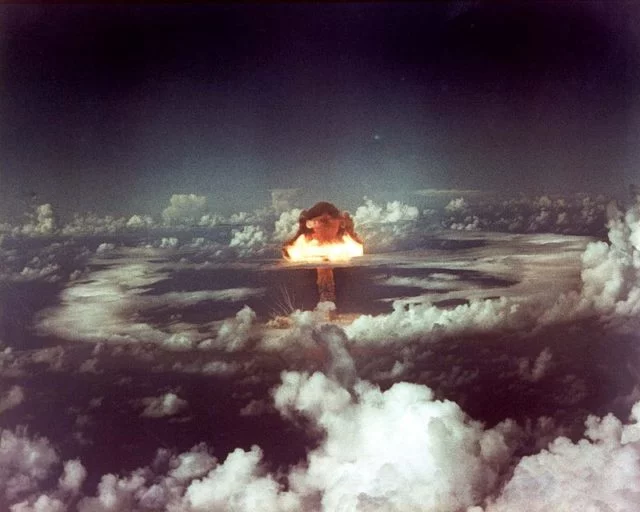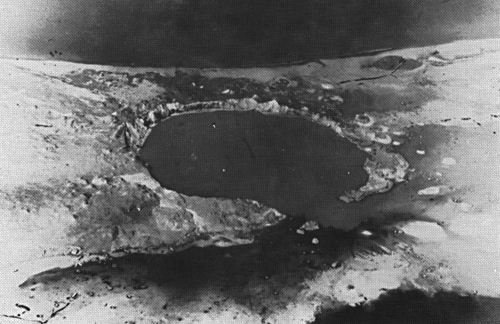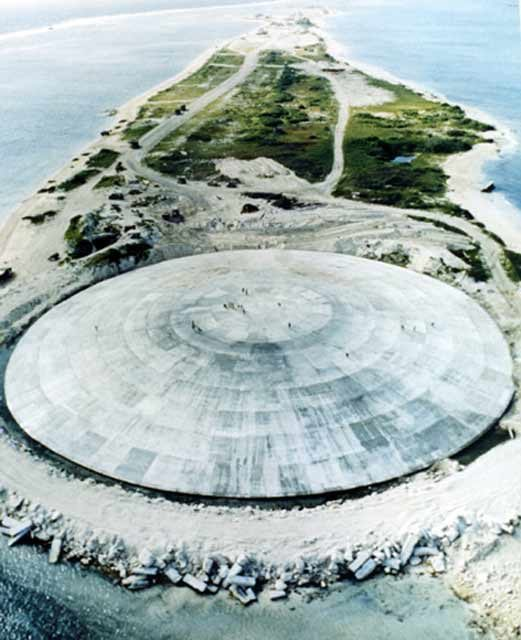Marshall Islands – Science fiction writers have made countless plot lines out of an earth destroyed by mankind’s greed and lack of foresight.
Many books, both fiction and nonfiction, have foretold the end of the world because of man’s single-minded desire to make technological advances with little or no thought of future consequences.
During the last years of World War II, the U.S. frantically worked to develop a hydrogen bomb, one that would put an end to the conflict – and America’s enemies back then – once and for all.
The Manhattan Project consisted of a team of scientists, led by Robert Oppenheimer, was the name given to America’s work to develop the atomic bomb in time to conclusively end what had become a long, costly, global struggle.
When the bombs were finally dropped on Hiroshima and Nagasaki, the cities were devastated, inhabitants died instantly or slowly from radiation poisoning.

In spite of that damage, the U.S. did not stop testing and advancing its weaponry. Work continued on developing the bomb even further, and in March, 1954, that work was tested in the South Pacific, a test known as “Castle Bravo” in the Marshall Islands.
However, scientists and military personnel grossly underestimated the new bomb’s power; it was 2 1/2 times more powerful than anyone expected. Consequently, ash fell as far as 7,000 miles away, cloaking the nearby islands in radioactive “snow.”
This mishandled test marked America’s stumble into the nuclear age. Unfortunately, no one realized how deadly this “snow” was, so children played in it while others marvelled at it, like it was some kind of northern Christmas in a tropical setting.
The testing continued until 1958, when finally the U.S. capitulated to global outcries to stop the trials. Unfortunately, the damage was done and today, because of climate change, the ill effects have intensified.

During the third week of May this year, United Nations (UN) Secretary General Antonio Guterres was in Fiji to talk about that damage, and how America tried to contain it by building a “kind of coffin” to contain the radioactive detritus. “…the President of the Marshall Islands…is very worried because there is a risk of leaking radioactive materials…in the area,” he told The Independent.
It was in 1977 that America’s Defence Nuclear Agency (DNA) started cleaning up and containing the debris. After it was collected, a dome was placed on top that would supposedly prevent the toxic substance from leaking.
When the Marshall Islands became self-governing in 1983, the U.S. essentially washed its hands of the problem, after relocating some citizens and settling financial claims. But the deal struck disallowed the possibility of future claims, meaning that the Islands have no legal recourse to pursue the U.S. for damages now.
That does not mean, however, it doesn’t have a moral duty to help, particularly as the Islands’ local government has no financial resources to fix the leaking dome. And one powerful person, Secretary General Guterres, made it clear which side of the issue he’s on.

“The Pacific was victimized in the past, as we all know,” he said bluntly while in Fiji. “The consequences of these (tests) have been quite dramatic, in relation to health, in relation to poisoning of the waters in some areas.” The question now is: what, if anything, is the United States prepared to do to help?
Although it acknowledged in 2013 that there were problems, a government report insisted the leaking dome presented a “low risk” to people’s health.
Another Article From Us: Lost Bombs, Crashed Aircraft and Missing Submarines: US Military Nuclear Near Misses.
But knowing what scientists know today about radiation sickness and the fatality rates of those exposed, clearly people of the Marshall Islands are in jeopardy. The only unknown factor was, and is, what America plans to do to clean up the mess it made so many decades ago.
